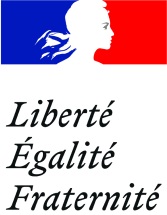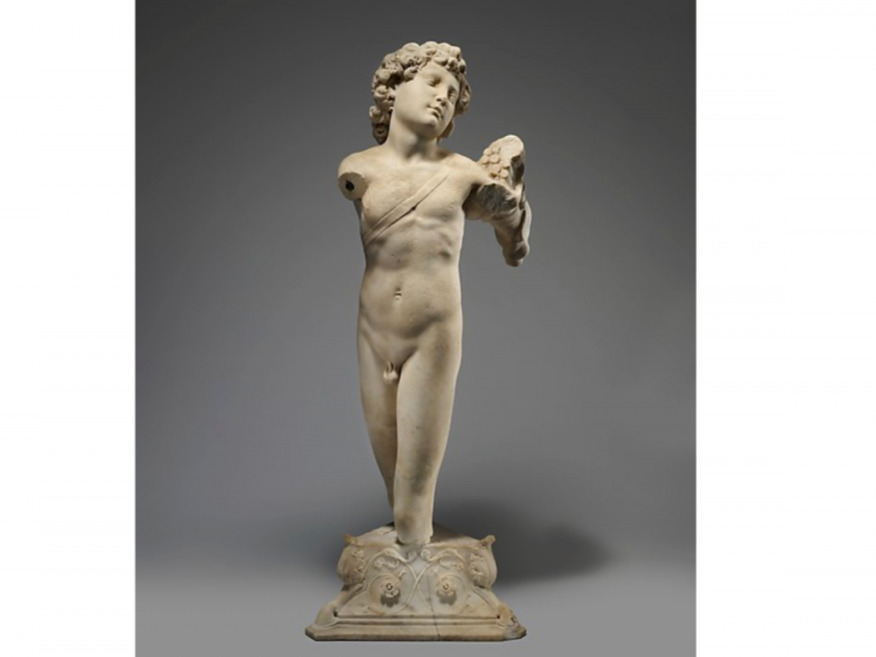New York, May 24, 2019—The Cultural services of the French Embassy and The Metropolitan Museum of Art announce the renewal of a loan agreement pertaining to one of the earliest known works by Michelangelo Buonarroti (1475–1564) that is also his sole marble sculpture on view at a museum in North America. Originally loaned to The Met in 2009 for a 10-year period, Cupid will remain at the Museum for another decade.
“Michelangelo’s Cupid embodies a beautiful relationship between The Metropolitan Museum of Art and France,” stated Bénédicte de Montlaur, Cultural Counselor of the French Embassy. “We are thrilled to renew this partnership as we believe that no U.S. institution could better highlight the beauty of the Michelangelo sculpture than The Met.”
Max Hollein, Director of The Met, added, “Michelangelo’s youthful genius is apparent in his exquisitely rendered Cupid. The work emits an emotional and intellectual charge, and it is an honor to present this stunning sculpture to our millions of visitors. We are incredibly grateful to the French Embassy for allowing this historic work to continue to grace our galleries.”
When the fragmentary marble figure of a nude youth came to the United States in the early 1900s, its attribution to Michelangelo had been all but forgotten. The sculpture was acquired as a decorative centerpiece for the marble rotunda entrance of New York City’s Payne Whitney Mansion (located at 972 Fifth Avenue), a sumptuous building commissioned as a wedding gift for Mr. and Mrs. Payne and Helen Whitney and designed by the American architect Stanford White.
In 1952, the mansion became the home of the Cultural services of the French Embassy. Visible from the sidewalk, Cupid remained hidden in plain sight until the mid-1990s, when a professor at New York University, Kathleen Weil-Garris Brandt, announced her discovery of a “Michelangelo on Fifth Avenue.” Although many greeted her attribution with skepticism, one who did not was Metropolitan Museum of Art curator James David Draper (now Curator Emeritus in the Museum’s Department of European Sculpture and Decorative Arts).
In 2009, the Cupid came to The Met as part of a focused exhibition that dealt with the question of Michelangelo’s authorship. Three years later, The Met hosted an international two-day symposium titled “Michelangelo and Florence in the 1490s” that established scholarly consensus; the Cupid was accepted as a sculpture designed and carved by the youthful Michelangelo. In 2017, Met curator Carmen Bambach presented the Cupid as a touchstone for understanding Michelangelo’s early career in her groundbreaking exhibition Michelangelo: Divine Draftsman and Designer.
Today, Michelangelo’s Cupid is the dramatic focal point in The Met’s gallery featuring 16th-century Italian sculpture and decorative arts (gallery 503).
A dinner co-hosted by Béatrice Stern, Trustee of The Metropolitan Museum of Art, was held on May 23 at the Cultural services of the French Embassy to welcome Max Hollein to the Francophile community, as well as to celebrate the renewal of the loan and the friendship between French institutions and The Met.
About the Cultural services of the French Embassy
The Cultural services of the French Embassy promotes the best of French arts, literature, cinema, digital innovation, language, and higher education across the US. Based in New York City, Washington D.C., and eight other cities across the country, the Cultural services brings artists, authors, intellectuals and innovators to cities nationwide. It also builds partnerships between French and American artists, institutions and universities on both sides of the Atlantic. In New York, through its bookshop Albertine, it fosters French-American exchange around literature and the arts. www.frenchculture.org.
About The Met
The Met presents over 5,000 years of art from around the world for everyone to experience and enjoy. The Museum lives in three iconic sites in New York City—The Met Fifth Avenue, The Met Breuer, and The Met Cloisters. Millions of people also take part in The Met experience online. Since it was founded in 1870, The Met has always aspired to be more than a treasury of rare and beautiful objects. Every day, art comes alive in the Museum’s galleries and through its exhibitions and events, revealing both new ideas and unexpected connections across time and across cultures. www.metmuseum.org
Media Contacts
Jennifer Isakowitz, Ann Bailis, The Metropolitan Museum of Art
Communications@metmuseum.org, +1-212-570-3951
Camille Desprez, Cultural services of the French Embassy
camille.desprez@diplomatie.gouv.fr, +1-212-439-1417



